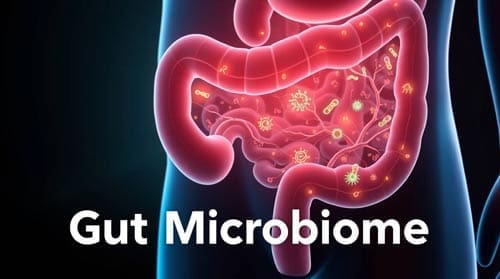Hidden Conversations: How Gut Microbiome Signals Shape Disease Outcomes
Please like and subscribe if you enjoyed this video 🙂
Introduction
The human gut hosts approximately 100 trillion microorganisms, collectively known as the gut microbiome. These microbes contribute over 150 times more genetic material than the human genome, playing an important role in nutrient metabolism, immune regulation, and overall physiological balance.
Beyond digestion, the gut microbiome influences health through various mechanisms, including metabolite production, immune modulation, and systemic signaling pathways. When this microbial ecosystem becomes imbalanced, a condition known as dysbiosis, it has been associated with several chronic diseases, including:
- Cardiovascular disease
- Metabolic disorders
- Inflammatory bowel disease (IBD)
- Type 2 diabetes
- Autoimmune conditions
Research has revealed that the microbiome has far-reaching effects beyond the gastrointestinal tract, particularly through the gut-brain axis, a complex bidirectional communication network linking the gut and central nervous system. These findings underscore the microbiome’s role in disease pathogenesis and its potential as a target for novel therapeutic interventions.
Uncovering the intricate relationship between the gut microbiome and systemic health is reshaping medical approaches to disease prevention and treatment, paving the way for precision medicine and microbiome-targeted therapies.
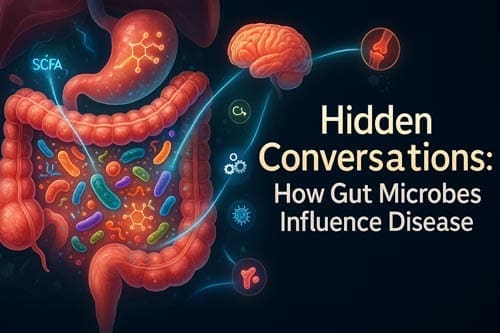
The Human Gut Microbiome Ecosystem
The human body’s gastrointestinal tract is the most densely populated microbial environment. This complex ecosystem has an intricate network of microorganisms called the gut microbiome that plays key roles in host metabolism, immune regulation, and disease progression.
Bacterial, viral, and fungal communities in the gut
The gut microbiome is a diverse and dynamic ecosystem where bacteria dominate, but it also includes fungi, viruses, archaea, and protists. Bacterial communities in the gut mainly consist of three phyla: Ascomycota, Basidiomycota, and Zygomycota. The intricate relationships within this ecosystem highlight interkingdom interactions, such as the coexistence of Candida fungi with bacterial genera like Prevotella and Ruminococcus, as well as archaeal species like Methanobrevibacter. These interactions influence host metabolism and microbial symbiosis.
While bacteria are the most studied, the mycobiome (fungal microbiota) undergoes more frequent shifts over time in both humans and animal models. Despite making up a smaller proportion of the microbiome, fungal populations significantly affect gut health. Inflammatory bowel disease (IBD) patients, for example, exhibit fungal dysbiosis, characterized by a reduction in mycobiome diversity and a shift in the Basidiomycota/Ascomycota ratio, primarily due to an increase in Candida albicans and a decline in Saccharomyces cerevisiae.
Beyond fungi, the virome (viral microbiota) and archaeome (archaeal microbiota) play vital roles in gut homeostasis, although research on them remains limited. Archaea, in particular, function as keystone species, meaning their presence supports the stability of the microbiome and influences various aspects of host physiology.
Core microbiome vs. variable components
The core microbiome refers to microbial species or functions that remain relatively stable across individuals despite personal differences. This stability manifests in two major ways:
- Temporal Stability – The microbiome can recover from disruptions and maintain equilibrium.
- Community Consistency – Certain microbial characteristics are shared among different individuals.
Defining the core microbiome, however, presents challenges. Early studies using 16S rRNA gene sequencing found minimal overlap in bacterial species among individuals, with some research failing to identify any universally shared microbial taxa. These findings have led to multiple theories:
- Core microbiomes may exist within specific populations rather than globally.
- Core components might be more evident at higher taxonomic levels.
- Microbiome stability may be more about functional consistency than taxonomic similarity.
A function-based approach suggests that different microbial species can perform similar biochemical roles, ensuring metabolic stability despite taxonomic variation. For instance, multiple bacterial species contribute to complex carbohydrate digestion and the production of essential metabolites, preserving gut function even when microbial composition shifts. Keystone species play a disproportionate role in maintaining microbial community structure, and their loss can trigger dysbiosis, potentially leading to disease.
Factors shaping microbiome composition
Despite shared microbial traits among populations, individual microbiomes vary significantly due to multiple factors:
-
Birth Method & Early Colonization
- Vaginal birth exposes newborns to maternal microbiota, leading to an early gut community enriched with Lactobacillus and Prevotella.
- Cesarean delivery results in microbiota dominated by Streptococcus, Corynebacterium, and Propionibacterium, which are acquired through skin contact rather than maternal vaginal microbiota.
-
Infant Nutrition
- Breastfeeding promotes stable bacterial populations and enhances mucosal immune responses, partly due to the presence of beneficial bacteria and immune-modulating compounds in human milk.
- Formula feeding, in contrast, alters microbial colonization patterns and immune system development.
-
Dietary Influence
- Diet plays a pivotal role in microbiome composition throughout life.
- Western diets, high in sugar, starch, and animal protein, foster different microbial communities compared to fiber-rich, plant-based diets typical in some African populations.
- Short-term dietary changes can rapidly alter microbiome structure and function.
-
Genetics & Microbial Interactions
- Although the gut microbiome is shaped by lifestyle, host genetics also plays a role.
- Genome-wide association studies (GWAS) have identified 31 genetic loci linked to gut microbiome composition, including the LCT gene, which regulates lactase production and influences Bifidobacterium abundance in an age-dependent manner.
- Interestingly, studies on identical vs. fraternal twins reveal that microbiome composition is not strictly tied to genetic similarity, indicating that environmental factors exert a stronger influence.
-
Antibiotics & Medication
- Antibiotics significantly alter microbiome diversity by indiscriminately eliminating both beneficial and harmful bacteria.
- These disruptions can have long-term effects, with some microbial populations struggling to recover even months or years after antibiotic exposure.
-
Geographical & Cultural Differences
- The environment where a person lives plays a major role in shaping their microbiome.
- Urban lifestyles, dietary habits, pet ownership, exercise, sleep patterns, and stress levels all contribute to microbiome diversity.
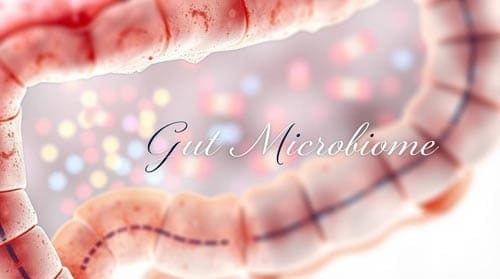
Molecular Language of Microbiome-Host Communication
The gut microbiome does more than just exist alongside us – it actively talks to our body through complex molecular conversations. This remarkable communication shapes how our body responds and affects disease outcomes through different signaling pathways.
Microbe-derived metabolites as signaling molecules
Our intestinal microbiota makes various metabolites that act as key messengers between microbes and their host. These compounds work as middlemen or end products when bacteria digest food, which connects gut function to our body’s systems. The main communication pathways include:
- Short-chain fatty acids (SCFAs) – Acetate, propionate, and butyrate come from bacteria breaking down complex carbohydrates. They help maintain gut barrier strength and control inflammation
- Aromatic amino acid derivatives – Tryptophan metabolites like kynurenine lower Natural Killer cell activity. Their buildup in the brain might link to depression and schizophrenia
- Trimethylamine N-oxide (TMAO) – Several bacterial species make TMAO from dietary choline. It moves into cerebrospinal fluid and might contribute to neurodegenerative disorders
These microbial metabolites bind to specific host receptors, especially G-protein-coupled receptors (GPRs), which start classical signal transmission processes. To name just one example, SCFAs attach to free fatty acid receptors 2 and 3 (FFA2/FFA3) on immune and enteroendocrine cells. This changes cytokine levels that affect neuroinflammation.
The microbiota can also use growth-related signaling pathways to affect host development. Through these mechanisms, the gut microbiome’s influence reaches beyond the intestines to affect distant organs, including the brain, through the gut-brain axis.
Pattern recognition receptors and microbiome sensing
Pattern recognition receptors (PRRs) serve as essential components of the innate immune system, enabling cells to detect microbial signals and coordinate immune responses. These receptors are widely expressed across various cell types, including epithelial, endothelial, and neuronal cells. Their primary function is to recognize microbe-associated molecular patterns (MAMPs), which are present in both pathogenic and commensal bacteria.
PRRs are classified into four major families:
- Toll-like receptors (TLRs) – Membrane-bound receptors that initiate immune signaling upon detecting microbial components.
- Nucleotide-binding oligomerization domain-like receptors (NLRs) – Cytoplasmic sensors that recognize bacterial molecules and trigger intracellular responses.
- Retinoic acid-inducible gene I-like receptors (RLRs) – Key mediators in antiviral immunity.
- C-type lectin receptors (CLRs) – Involved in detecting fungal pathogens and modulating immune interactions.
Among these, TLRs play a critical role in early immune responses. For example, TLR4 detects lipopolysaccharide (LPS) from Gram-negative bacteria, while TLR9 recognizes unmethylated CpG DNA from bacterial and viral sources. Upon activation, TLRs recruit adaptor proteins, triggering signaling cascades that lead to the activation of NF-κB, mitogen-activated protein kinases (MAPKs), and interferon-regulatory factor 3 (IRF3), all of which drive immune and inflammatory responses.
Similarly, NLRs function as cytoplasmic PRRs that detect intracellular bacterial components. NOD1 identifies γ-D-glutamyl-meso-diaminopimelic acid (iE-DAP) found in Gram-negative and select Gram-positive bacteria, while NOD2 detects muramyl dipeptide (MDP), a common bacterial cell wall component. These receptors help maintain immune homeostasis by mediating interactions between host cells and microbial communities.
Extracellular vesicles in cross-kingdom communication
Extracellular vesicles (EVs) play a key role in the conversation between microbiota and host. They transport different molecules across kingdoms without cells touching directly. These membrane-wrapped compartments carry proteins, RNAs, lipids, and other signaling molecules between cells and organisms.
Bacterial membrane vesicles (MVs), which range from 20 to 400 nm in size, play diverse roles, including:
- Delivering virulence factors and toxins to host cells.
- Enhancing bacterial competition by inhibiting rival microbes.
- Activating host immune responses through pathogen-associated molecular pattern (PAMP) receptors.
- Facilitating quorum sensing, a bacterial communication mechanism.
These bacterial vesicles contain different RNA types, including mRNA, tRNA, rRNA, and non-coding RNAs that can move to host cells. Fungal EVs also transport RNA populations and help in biofilm matrix production, cell wall rebuilding, and host-pathogen interactions.
In addition, the communication via EVs is bidirectional. Host-derived EVs can influence microbial populations by modulating immune responses and reducing inflammation through mechanisms such as inhibiting IL-8 and TNF production.
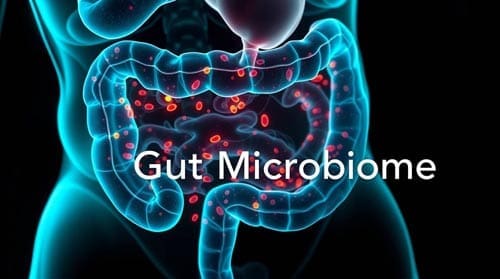
Short-Chain Fatty Acids: Key Messengers in Health
Short-chain fatty acids (SCFAs), including acetate, propionate, and butyrate, are important metabolites produced by gut bacteria through the anaerobic fermentation of dietary fiber. These molecules act as signaling mediators, influencing metabolic, immune, and neurological processes.
Butyrate’s role in intestinal barrier function
Among SCFAs, butyrate serves as a primary energy source for colonocytes and plays a crucial role in maintaining intestinal barrier integrity. At an optimal concentration (~2 mmol/L), butyrate enhances barrier function by:
- Promoting tight junction assembly through the regulation of ZO-1 and occludin proteins.
- Activating AMP-activated protein kinase (AMPK), which helps maintain cellular energy balance.
- Stimulating IL-10 receptor expression via STAT3 activation and histone deacetylase (HDAC) inhibition.
However, butyrate’s effects are concentration-dependent. While moderate levels support barrier integrity, higher concentrations (~8 mmol/L) can induce epithelial cell apoptosis, underscoring the importance of maintaining a delicate balance for gut health.
Additionally, butyrate enhances intestinal defense by activating the NLRP3 inflammasome, which stimulates IL-18 expression, a key regulator of epithelial homeostasis. It also strengthens barrier integrity through PPARγ activation and the Wnt/β-catenin signaling pathway.
Propionate’s systemic anti-inflammatory effects
Propionate exerts significant anti-inflammatory effects both locally in the gut and systemically. Studies show that propionate supplementation reduces inflammatory markers and mitigates lipopolysaccharide (LPS)-induced immune activation.
For instance, at a concentration of 30 mmol/L, propionate:
- Suppresses TNF-α release from neutrophils.
- Inhibits IL-6 expression at both mRNA and protein levels in colonic cultures.
- Blocks NF-κB activation, with an IC50 of approximately 1 mmol/L for IL-6 suppression.
In models of dextran sulfate sodium (DSS)-induced colitis, 1% dietary propionate was found to:
- Prevent weight loss and intestinal tissue damage.
- Restore tight junction protein expression (ZO-1, occludin, and E-cadherin).
- Suppress pro-inflammatory cytokine production, including IL-1β, IL-6, and TNF-α.
Beyond its gut-related benefits, propionate also impacts hepatic metabolism by inhibiting hydroxy-methylglutaryl-CoA reductase, a key enzyme in cholesterol biosynthesis. It has also been linked to neuroprotection through activation of GPR41 receptors, demonstrating its broader physiological relevance.
SCFA receptors and downstream signaling cascades
SCFAs work through different receptors and signaling mechanisms. Four G-protein-coupled receptors (GPRs) detect SCFAs: GPR41 (FFA3), GPR43 (FFA2), GPR109A, and Olfr78. Each receptor prefers different SCFAs – FFA2 likes acetate and propionate best, while FFA3 bonds strongest with butyrate and propionate.
When SCFAs bind to these receptors, they trigger specific signaling chains:
- FFA2 connects to both Gi/o and Gq proteins, but FFA3 only uses Gi/o proteins
- Active GPRs create effects through mitogen-activated protein kinase kinase (MEK) and extracellular signal-regulated kinase (ERK) pathways
- This triggers production of chemokines, cytokines, and antimicrobial peptides needed for immune function
SCFAs also work as histone deacetylase (HDAC) inhibitors to influence gene expression and cellular processes. This HDAC blocking increases tight junction protein expression and helps reduce inflammation by suppressing NF-κB activation.
SCFAs activate AMPK by increasing the AMP/ATP ratio, which affects pathways like mTOR, PGC-1A, and FOX03. This metabolic control links SCFAs to glucose movement, fat burning, and energy balance.
Bile Acid Transformations and Metabolic Signaling
Bile acids serve as a vital communication channel between the intestinal microbiome and host physiology. These cholesterol-derived molecules were once thought to be just digestive agents. Now scientists recognize them as powerful signaling compounds that regulate numerous metabolic processes through dedicated receptors.
Microbial modification of primary bile acids
The liver creates primary bile acids: cholic acid (CA) and chenodeoxycholic acid (CDCA) in humans through cholesterol oxidation. Cholesterol 7α-hydroxylase (CYP7A1) acts as the rate-limiting enzyme. These primary bile acids bind with glycine or taurine before their secretion into bile. The human gut microbiome modifies primary bile acids, converting them into over 50 different secondary bile acids through specialized enzymatic pathways. Once primary bile acids enter the gastrointestinal tract, microbial enzymes facilitate the following transformations:
- Deconjugation: Bacterial bile salt hydrolases (BSH) remove conjugated amino acids, altering fat emulsification efficiency and reducing enterohepatic recirculation.
- Dehydroxylation: The enzyme 7α-dehydroxylase eliminates the 7α-hydroxyl group from cholic acid (CA) and chenodeoxycholic acid (CDCA) to generate secondary bile acids like deoxycholic acid (DCA) and lithocholic acid (LCA).
- Dehydrogenation and Epimerization: Hydroxysteroid dehydrogenases (HSDHs) oxidize and structurally modify hydroxyl groups, producing a diverse range of over 20 bile acid metabolites.
Approximately 5% of primary bile acids escape reabsorption in the terminal ileum, entering the colon, where microbial activity transforms nearly all of them. These transformations not only shape gut microbial composition but also produce metabolites with distinct biological effects. For example, 7β-hydroxysteroid dehydrogenase converts CDCA into ursodeoxycholic acid (UDCA), enhancing bile acid solubility and reducing overall toxicity.
FXR and TGR5 receptor activation pathways
Beyond their role in digestion, secondary bile acids work as signaling molecules by activating two main receptors: nuclear farnesoid X receptor (FXR) and membrane G protein-coupled bile acid receptor TGR5. Each receptor responds differently to various bile acids:
- FXR activation: FXR is a nuclear receptor that regulates bile acid synthesis and metabolism. Upon bile acid binding, FXR forms a heterodimer with retinoid X receptor (RXR), triggering transcriptional regulation. The potency of bile acids in activating FXR follows this order: CDCA > DCA > LCA > CA. In the liver, FXR activation induces small heterodimer partner (SHP) expression, which inhibits CYP7A1 and CYP8B1, effectively suppressing bile acid synthesis.
- TGR5 activation: This G-protein coupled receptor responds to both primary and secondary bile acids, showing highest affinity for LCA. Upon activation, TGR5 stimulates cAMP production and subsequent protein kinase A (PKA) pathways. This pathway raises intracellular calcium levels in intestinal L cells, which stimulates glucagon-like peptide-1 (GLP-1) secretion.
Recent studies have revealed a direct FXR-TGR5 crosstalk, where FXR activation upregulates TGR5 expression via a promoter-responsive element, further integrating bile acid signaling with metabolic control.
Implications for glucose and lipid metabolism
Bile acid-mediated FXR and TGR5 activation have profound effects on glucose and lipid homeostasis:
- Glucose Metabolism:
- TGR5 activation in intestinal L cells stimulates GLP-1 secretion, promoting insulin release and improving insulin sensitivity.
- FXR activation induces fibroblast growth factor 15/19 (FGF15/19), which inhibits hepatic gluconeogenesis by suppressing the CREB-PGC-1α pathway.
- FXR signaling in pancreatic β-cells enhances glycolysis, increasing the ATP:ADP ratio, which closes KATP channels and facilitates insulin release.
- Lipid Metabolism:
- FXR suppresses hepatic lipogenesis by inhibiting SREBP-1c, while also promoting triglyceride clearance.
- TGR5 activation influences energy expenditure by stimulating thyroid hormone deiodinase type 2 (DIO2) in brown adipose tissue (BAT), converting thyroxine (T4) to triiodothyronine (T3). This increases metabolic rate and promotes white adipose tissue browning.
Disruptions in bile acid signaling are linked to metabolic disorders such as obesity, type 2 diabetes, and non-alcoholic fatty liver disease (NAFLD). Targeting the microbiota-bile acid-receptor axis presents new therapeutic avenues for these conditions, given the microbiome’s direct influence on bile acid composition and function.
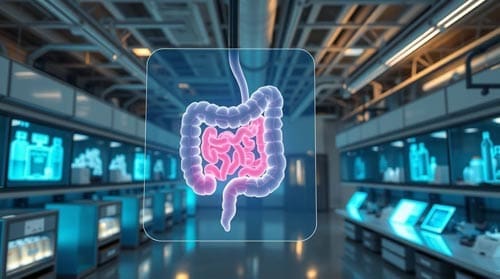
Tryptophan Metabolites and Immune Regulation
Tryptophan-derived metabolites form a complex communication network between the gut microbiome and immune system. This essential amino acid undergoes microbial metabolism through multiple pathways, yielding bioactive compounds that influence immune regulation and tissue homeostasis.
Indole derivatives and aryl hydrocarbon receptor activation
Gut bacteria convert tryptophan into indole derivatives, which act as signaling molecules that mediate host-microbe interactions. These metabolites include:
- Indole-3-lactate (ILA)
- Indole-3-propionate (IPA)
- Indole-3-aldehyde (IAld)
- Indole-3-acetic acid (IAA)
These compounds primarily exert their effects through the aryl hydrocarbon receptor (AHR), a ligand-activated transcription factor essential for immune modulation. AHR activation initiates several protective mechanisms:
- Strengthens the intestinal barrier by enhancing tight junction assembly.
- Increases IL-22 production by T cells and innate lymphoid cells (ILC3).
- Promotes regulatory T cell differentiation and supports anti-inflammatory macrophages.
- Suppresses pro-inflammatory cytokines by inhibiting NF-κB and AP1 signaling.
AHR is widely expressed across various cell types, including intestinal epithelial cells, intraepithelial lymphocytes, and regulatory T cells. Structural modifications of indole derivatives can significantly influence their receptor affinity and biological effects, highlighting the potential therapeutic applications of halogenated indole compounds in inflammatory conditions.
Serotonin production and enteric nervous system function
The gastrointestinal tract holds 95% of the body’s serotonin, which enterochromaffin cells produce. This neurotransmitter helps control intestinal motility, secretion, blood flow, and nerve development in the enteric nervous system (ENS).
Two different tryptophan hydroxylase isoforms make serotonin: TPH1 in enterochromaffin cells and TPH2 in neurons. These pathways create separate serotonin pools with different roles. Neuronal serotonin (from TPH2) helps develop late-born enteric neurons and intestinal motility patterns. Mucosal serotonin (from TPH1) manages sensory and secretory functions.
The gut microbiota significantly influences serotonin production, as demonstrated by germ-free mice, which exhibited reduced serotonin levels in the colon and bloodstream. Adding microbiota brought serotonin production back to normal. Gut microbiota boost serotonin production in colonic enterochromaffin cells through metabolites and cell components. This serotonin signaling then affects immune cell function and recruitment.
Kynurenine pathway modulation by gut microbes
The kynurenine pathway metabolizes nearly 90% of dietary tryptophan, primarily through indoleamine 2,3-dioxygenase 1 (IDO1). This enzyme is upregulated during inflammation, converting tryptophan into kynurenine metabolites that regulate immune responses and cellular energy metabolism.
- Kynurenine-AHR Interaction:
- Kynurenine activates AHR, which further induces IDO1 expression, creating a self-reinforcing loop that modulates immune function.
- IDO1-expressing dendritic cells recruit additional AHR-expressing dendritic cells, promoting immune tolerance.
The gut microbiome directly influences IDO1 activity and kynurenine metabolism, with studies showing that Bifidobacterium infantis restores kynurenine-to-tryptophan balance in germ-free models. These findings underscore the microbial regulation of tryptophan metabolism as a critical factor in immune homeostasis.
Microbiome Signals in Intestinal Barrier Dysfunction
The intestinal epithelial barrier acts as a selective gateway between internal tissues and the outside world. Microbial signals play a vital role in maintaining its integrity. Problems with this communication system can lead to barrier dysfunction, which becomes a key factor in many disease conditions.
Tight junction protein regulation by microbial products
Tight junctions (TJs) are complex protein structures that include transmembrane proteins (occludin, claudins) and peripheral membrane proteins (ZO-1, ZO-2). These proteins control how molecules pass through the epithelial layer based on their size and charge. Microbial metabolites affect TJ assembly and function through several pathways:
- Good bacteria boost barrier integrity by increasing TJ gene expression – Lactobacillus plantarum increases TJ proteins and blocks pro-inflammatory cytokine expression in the colon
- Bad bacteria break down TJs through virulence factors – some E. coli strains make the intestine more permeable, while others like E. coli Nissle 1917 help produce more ZO-1 and ZO-2
- Bacterial signals control pathways including protein kinase C, mitogen-activated protein kinases, and Rho GTPases that help form TJs
Probiotics often target TJ regulation. Bifidobacterium infantis makes the intestinal barrier work better by increasing TEER and reducing permeability in cell layers. This leads to more occludin, claudin-3 and ZO-1 production.
Mucus layer interactions and goblet cell function
The intestinal mucus layer serves as the first physical defense against invading microbes. The colon’s barrier has two parts: an inner layer that sticks firmly with few bacteria, and a thicker outer layer full of bacteria that doesn’t stick as much. Goblet cells are special secretory cells that make up about 4% of duodenal and 16% of distal colonic epithelial cells. These cells produce mucin glycoproteins that create this protective barrier.
Microbes influence mucus dynamics through:
- Microbial products like LPS and peptidoglycan directly trigger mucus secretion
- They make enzymes (sulphatase, glycosidase, sialidases) that break down mucus into SCFAs
- They affect how goblet cells develop and work
Microbes and mucus help each other. Specific bacteria, known as mucus-associated microorganisms (MAMs), thrive in this glycan-rich environment, with key species including Lachnospiraceae, Ruminococcaceae, Bifidobacterium spp., and Akkermansia muciniphila.
Bacterial translocation mechanisms and consequences
Bacterial translocation refers to the movement of microbes across the intestinal epithelial barrier. Under normal conditions, this barrier prevents systemic infection, but when compromised, particularly during acute gut injury or septic shock, bacteria can infiltrate the bloodstream, leading to widespread inflammation.
Microbes cross the intestinal barrier through three primary mechanisms:
- Tight Junction Disruption – Pathogens weaken the tight junctions (TJs) between epithelial cells, allowing them to pass through.
- Endocytosis-Mediated Entry – Certain bacteria enter intestinal cells via endocytosis, bypassing external defenses.
- Immune Cell Sampling – Specialized immune cells such as M cells and dendritic cells sample gut contents, inadvertently permitting bacterial entry.
Several factors exacerbate bacterial translocation, including gut barrier damage from medications, radiation, excessive alcohol intake, hyperglycemia, and prolonged antibiotic use.
Once bacteria escape the gut, they can initiate systemic inflammatory responses that may contribute to conditions such as multiple organ dysfunction syndrome (MODS). Notably, Enterococci and Lactobacilli are among the primary bacterial species involved in pathological translocation, often triggering immune dysregulation and long-term disease progression.
Dysbiosis-Induced Inflammatory Cascades
Dysbiosis in the human gut microbiome creates an inflammatory environment that triggers immune responses throughout the body. The reduction of beneficial microbes allows harmful bacteria to expand. This imbalance starts a complex chain of inflammatory events that can develop into various diseases.
Pattern recognition receptor activation by pathobionts
Pathobionts are opportunistic microbes that emerge when the microbiome becomes disturbed. These microbes trigger inflammation through pattern recognition receptors (PRRs). PRRs recognize microbe-associated molecular patterns (MAMPs) present in both friendly and harmful bacteria. The normal stimulation from friendly bacteria maintains balance, but pathobionts disrupt this harmony.
PRRs involved in this process include:
- Toll-like receptors (TLRs) recognize bacterial lipopolysaccharide (LPS), peptidoglycan, and flagellin
- NOD-like receptors (NLRs) detect bacterial peptidoglycan motifs
- RIG-I-like receptors sense viral components
In dysbiotic states, bacteria that produce flagellin become more prevalent, leading to TLR5 activation and increased secretion of pro-inflammatory cytokines. Elevated LPS levels in circulation, a condition known as metabolic endotoxemia, is frequently observed in individuals with gut dysbiosis and is linked to metabolic disorders and systemic inflammation.
Inflammasome activation and cytokine production
Inflammasomes are multi-protein complexes that regulate immune responses by activating caspase-1. This activation allows pro-IL-1β and pro-IL-18 to process into their mature forms. The NLRP3 inflammasome needs two signals to work: microbial molecules or cytokines prime it first, then PAMPs or DAMPs activate it.
Upon activation, LPS-induced NLRP3 inflammasome formation leads to pyroptosis, a highly inflammatory form of programmed cell death that further amplifies immune responses.
The NLRP6 inflammasome, on the other hand, is essential for maintaining gut homeostasis, and its dysregulation has been linked to conditions such as colitis. Studies have shown that deficiencies in inflammasome components (Asc−/−, Nlrp6−/−, Nlrp1−/−, Nlrp3−/−) result in reduced IL-18 levels, predisposing individuals to inflammatory bowel diseases.
Chronic inflammation feedback loops
Inflammation induced by dysbiosis can become self-sustaining, leading to persistent gut barrier damage and increased permeability. This damage makes chronic low-grade inflammation worse.
Inflammation favors bacteria with flagella that can easily penetrate the mucosa. This creates a circular feedback loop. Bacteria move through the damaged gastrointestinal wall during injury. They reach mesenteric lymph nodes and trigger system-wide immune responses.
These repeated inflammatory cycles can change host cells’ gene expression permanently. Such epigenetic changes might contribute to chronic disease development.
Integrating Multi-Omics to Decode Microbiome Signals
To fully understand the intricate interplay between gut microbes and host physiology, researchers are leveraging multi-omics integration, a comprehensive approach that examines biological systems from multiple perspectives.
Metagenomics and functional potential
Advancements in metagenome-resolved sequencing have transformed microbiome research, enabling scientists to reconstruct individual microbial genomes directly from metagenomic data. Unlike traditional 16S rRNA sequencing, this approach allows for:
- De novo assembly of microbial genomes, including previously uncharacterized bacteria, viruses, and fungi.
- Discovery of novel gene functions and their role in microbial adaptation.
- High-resolution insights into species-level interactions within the microbiome.
Microbiome-assembled genomes (MAGs) are generated through two steps:
- Assembly – Short sequencing reads are combined into longer contiguous sequences (contigs).
- Binning – Contigs are grouped based on sequence similarity and coverage depth to reconstruct near-complete microbial genomes.
A high-quality MAG should be ≥90% complete with <5% contamination, ensuring accurate insights into microbial ecology and function.
Metabolomics for identifying bioactive compounds
Metabolomics provides a detailed analysis of microbiome-derived metabolites, revealing key interactions between the host, diet, and gut microbes. Studies using germ-free versus conventional mouse models have demonstrated that microbiota significantly influence host metabolic pathways, with 29–74% of detectable metabolites showing at least a 50% variation between these models.
Proteomics and phosphoproteomics in signaling pathway analysis
Protein modifications, particularly phosphorylation, regulate host responses to microbial signals. Phosphoproteomics has identified critical disruptions in cytoskeletal proteins and spliceosome components associated with dysbiosis, highlighting previously unrecognized mechanisms of microbial pathogenesis.
Machine learning approaches for data integration
Machine learning has revolutionized microbiome research by identifying disease-specific multi-omic signatures. Advanced computational models, such as MintTea, detect multi-omic disease-associated modules, uncovering coordinated changes across the microbiome, blood parameters, and metabolome. Trans-omic network analysis further enhances our ability to pinpoint microbiome-driven disease patterns.

Conclusion
The health of the human body relies on intricate molecular interactions between gut microbes and human cells, facilitated by diverse signaling pathways. Researchers have identified sophisticated communication networks that regulate immune function, metabolism, and overall physiological stability. Key mechanisms include:
- Short-chain fatty acids (SCFAs) modulating immune responses and metabolic processes
- Bile acid transformations influencing metabolic signaling pathways
- Tryptophan metabolites regulating immune function and neurological processes
- Pattern recognition receptors (PRRs) detecting microbial signals and shaping immune responses
- Extracellular vesicles facilitating cross-species molecular communication
These biochemical interactions play a crucial role in disease development and progression. When the balance of gut microbiota is disrupted, these communication networks weaken, often leading to chronic inflammation and metabolic imbalances, which are linked to various health disorders.
Advancements in multi-omics technologies such as metagenomics, metabolomics, and transcriptomics are shedding light on these complex microbial interactions. This deeper understanding is paving the way for innovative therapeutic strategies that aim to restore microbiome balance and correct disrupted signaling pathways.
As researchers continue to uncover how microbes interact with their human hosts, each discovery brings us closer to precision medicine approaches that target microbiome dysfunction. The next major breakthrough in microbiome research will likely stem from deciphering these hidden molecular codes, unlocking novel treatments to restore microbial communication and improve health outcomes across a wide range of diseases.
Frequently Asked Questions:
FAQs
Q1. How does the gut microbiome influence disease outcomes? The gut microbiome influences disease outcomes through various mechanisms, including metabolite production, immune modulation, and barrier function regulation. Disruptions in the microbial balance, known as dysbiosis, have been linked to conditions such as cardiovascular diseases, metabolic disorders, inflammatory bowel disease, and autoimmune conditions.
Q2. What are short-chain fatty acids (SCFAs) and why are they important? Short-chain fatty acids are metabolites produced by gut bacteria through fermentation of undigested carbohydrates. They play important roles in maintaining intestinal barrier integrity, regulating inflammatory responses, and influencing systemic metabolism. The three main SCFAs – acetate, propionate, and butyrate – have various beneficial effects on host health.
Q3. How do bile acids contribute to metabolic signaling? Bile acids, transformed by gut microbes, act as signaling molecules that regulate metabolic processes through dedicated receptors like FXR and TGR5. These microbially modified bile acids influence glucose and lipid metabolism, energy expenditure, and intestinal barrier function, playing a significant role in metabolic health.
Q4. What role do tryptophan metabolites play in immune regulation? Tryptophan metabolites, produced by gut microbes, form a sophisticated communication network with the host immune system. These compounds, particularly indole derivatives, activate the aryl hydrocarbon receptor (AHR), influencing immune cell differentiation, cytokine production, and intestinal barrier integrity. They also affect serotonin production and modulate the kynurenine pathway, further impacting immune responses.
Q5. How can multi-omics approaches help in understanding microbiome-host interactions? Multi-omics approaches integrate various analytical techniques like metagenomics, metabolomics, and proteomics to provide a comprehensive view of microbiome-host interactions. These methods allow researchers to identify novel microbial genomes, detect bioactive compounds, analyze signaling pathways, and use machine learning to integrate diverse datasets. This holistic approach offers unprecedented insights into the complex molecular dialogs between the gut microbiome and human host.
